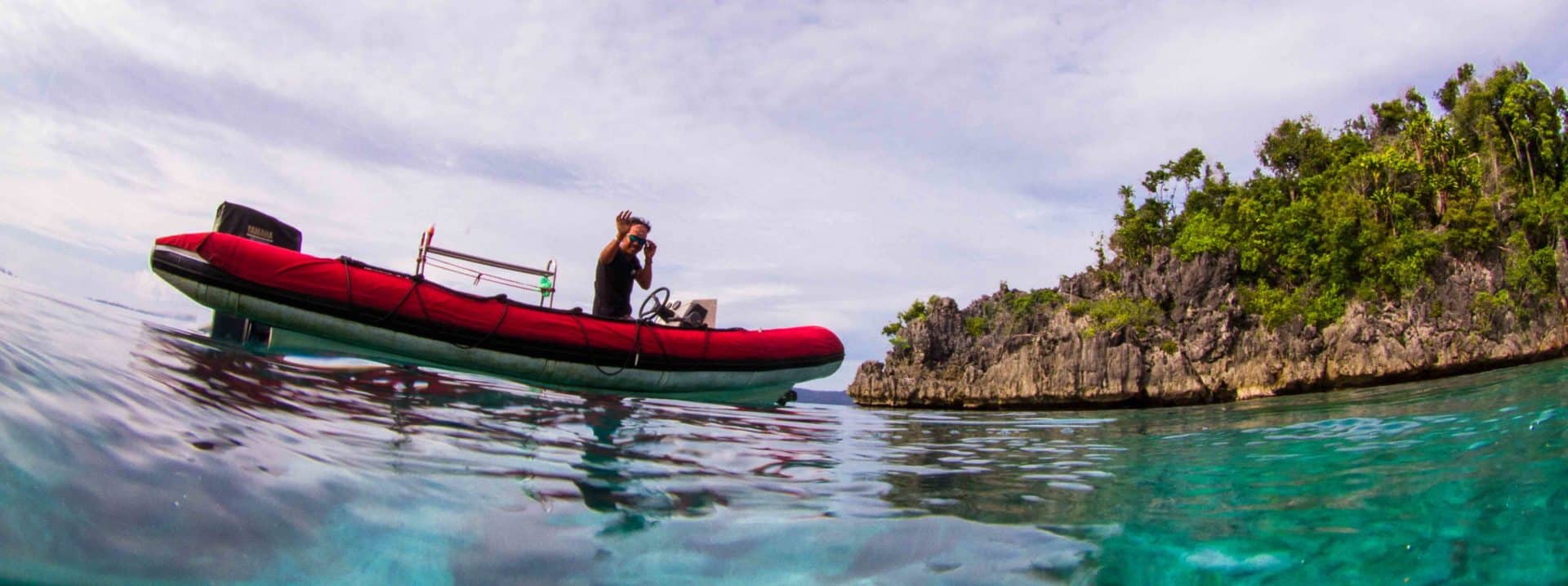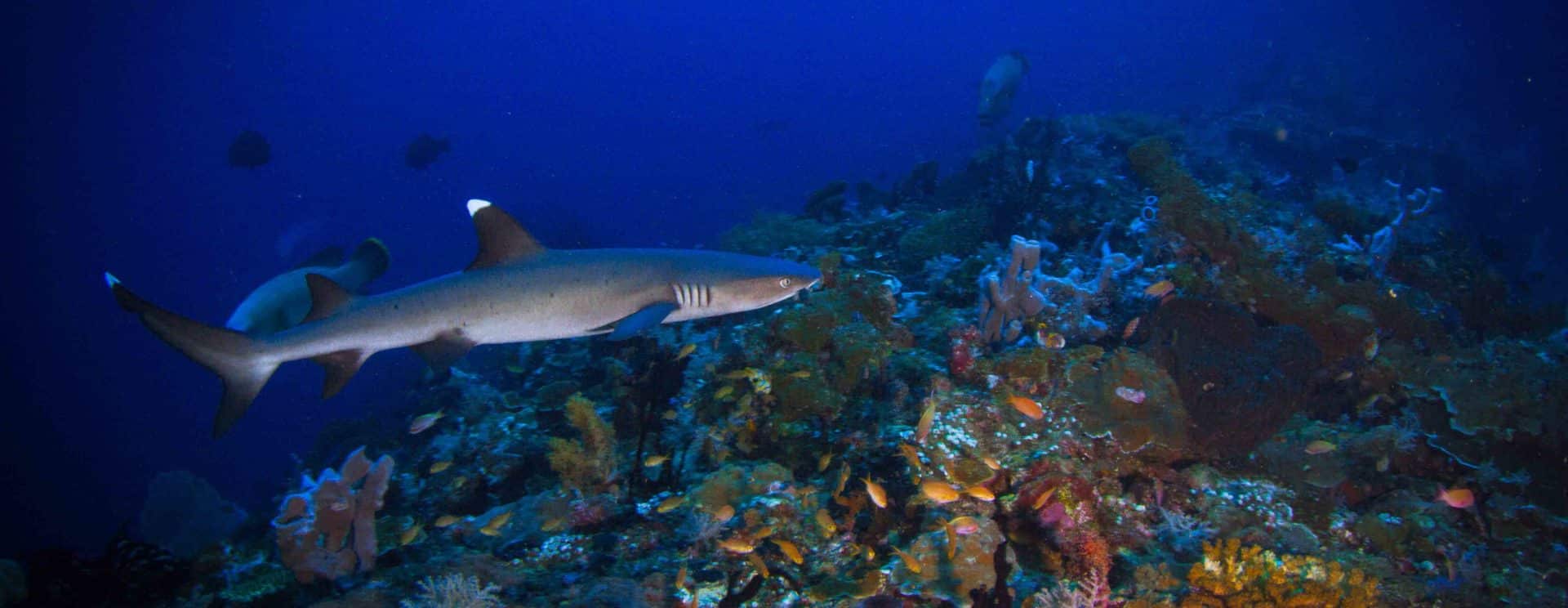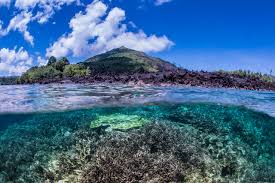Raja Ampat, or the Four Kings, proudly stands amongst the titans of diving destinations. What convergence of factors are there that results in such a range of fascinating marine subjects in this area? What is it about Raja Ampat that makes it shine brighter than other gems in the ocean? Why is Raja Ampat such a treasured dive destination?
Where will you find this promised jewel?
The marine paradise that is Raja Ampat is off the beaten track so be prepared for a long journey, but also know your travels will be well rewarded. Lying just off of Indonesia’s West Papua Province are the Four Kings: the islands of Waigeo, Salawati, Batanta, and Misool. The entire Raja Ampat archipelago comprises of the 4 main islands, 1,500 small isles, cays, shoals and untouched beaches and limestone cliffs.
The gateway to your Raja Ampat liveaboard cruise is Sorong. You can fly directly to Sorong from Jakarta, Ujung Pandang (Makassar) and Manado. Liveaboard departures can be as early as 09:00hrs, so it is wise to arrive the day before your cruise starts.
Biological and geographical factors
The region of Raja Ampat has seen a great deal of tectonic movement, bringing together various biological and geological elements. Fluctuations in sea levels have created barriers and bridges, allowing for multiple evolutionary avenues to evolve and spread out. Also the waters here have enjoyed warm temperatures for a very long time and many species here have very short larval periods, making the seas burst with life. Lack of river run-off and low human impact also help make for high quality water conditions.

Ask not what you will see at Raja Ampat, the shorter answer will be to the question – what won’t you see
Raja Ampat is the world’s most biodiverse marine region with more recorded fish, coral and mollusc species than anywhere else on Earth. Not only is the area home to diversity, but you can also marvel at the incredible abundant marine life. These species range from minuscule pygmy seahorses to gentle giants, whale sharks, and everything else between. Here you will encounter pelagic, reef fish, sharks and rays….in numbers.
If you are amongst the fortunate you may even dive with gigantic Queensland groupers, reputed to be as big as small cars or bizarre-looking wobbegongs! Macro lovers are also well catered for, especially at Sel Pele. The variety of colourful nudibranchs that you can find here is second to none from the tiger nudi, Tambja Affinis, to Lock’s nudis. Also keep your eyes peeled for the gorgeous but lethal blue-ringed octopus and the extremely rare, bottom-dwelling Berry’s bobtail squid. You will wish that your dive log book was larger to note all your incredible Raja Ampat marine encounters.
Diving sites in here are as interesting as the sea creatures. You can expect to dive in caves and caverns, over reef flats and sandy slopes, and around pinnacles and rocky outcrops. You can hang in the current and witness the fish action in the North, or the glide over the bright colourful reefs of the South bedecked in soft coral and busting with life, and go critter hunting in the muck diving sites and mangroves of Cenderawasih Bay.

10 Interesting facts about Raja Ampat
- The archipelago is about the size of Switzerland!
- It is part of the famed Coral Triangle
- The Bird’s Head Seascape contains more than 1,300 species of coral reef fish
- Has 75% (537) of all hard coral species that exist in the world!
- There are 600 species of mollusc in the archipelago
- 5 species of rare and endangered sea turtles, including the hawksbill turtle, call Raja Ampat ‘home’
- There are 13 marine mammal species in Raja Ampat
- 57 species of mantis shrimp can be seen here
- Raja Ampat is ranked # 1 in terms of underwater biodiversity
- Has 3 ponds that have stingless jellyfish
This destination is also one of those exceptional diving destinations where it is not a question of ‘if’ it is a case of ‘when’ will you dive there….












